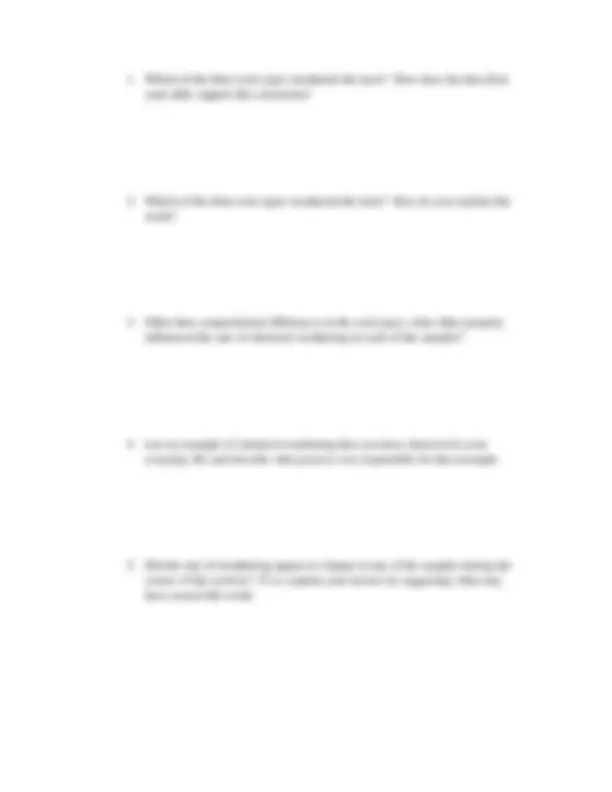



Study with the several resources on Docsity

Earn points by helping other students or get them with a premium plan


Prepare for your exams
Study with the several resources on Docsity

Earn points to download
Earn points by helping other students or get them with a premium plan
Community
Ask the community for help and clear up your study doubts
Discover the best universities in your country according to Docsity users
Free resources
Download our free guides on studying techniques, anxiety management strategies, and thesis advice from Docsity tutors
An essential geology laboratory experiment that investigates the chemical weathering of different rock types over several days. The lab procedure involves rinsing rock fragments, measuring their mass, treating them with 10% hcl solution, and recording mass changes after each acid treatment. The data collected can help students understand the influence of rock composition and other properties on chemical weathering rates.
Typology: Lab Reports
1 / 3

This page cannot be seen from the preview
Don't miss anything!


2 600 ml glass beakers with rock fragments 1 Strainer 1 flask of 100 ml of 10% HCL 1 laboratory balance lots of water & paper towels
1 Rinse the rock chips in each jar with clean water to remove any dust or loose grains. Let water run slowly into each jar until ¾ full and then drain the water, including the samples, into the strainer. Repeat several times for each beaker and then let the rock chips and beaker dry on paper towels for a minute or two. 2 Next, place the rock fragments on weighing paper or a weigh boat and use a laboratory balance to find the mass of the rock fragments (to the nearest gram). Record the information in Data Table #1. 3 Place the rock fragments back into the beaker. Using the flask provided, pour the 10% HCL over the rock fragments. This amount of liquid should completely cover the rock chips. Set the beaker aside for at least one day.
4 On the next day of this activity, pour off the acid solution from each jar. Use the strainer to catch any rock fragments which may fall out. You may pour the acid solution down the drain, but flush with plenty of fresh water. 5 Rinse the contents of the strainer and then return them to the beaker. Repeat steps 1,2 & 3. 6 Continue this daily procedure for each of the days as directed by your instructor. Make sure you record your results in the Data Table on the following page.
Rock Sample
Original Mass (g)
Mass after 1st acid
Net Change (B-A)
Mass after 2nd acid
Net Change (D-B)
Mass after 3rd acid
Net Change (F-D) #